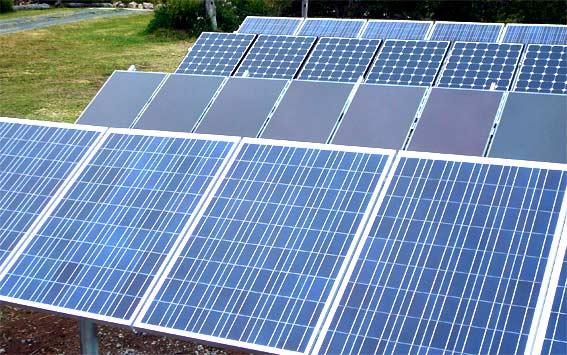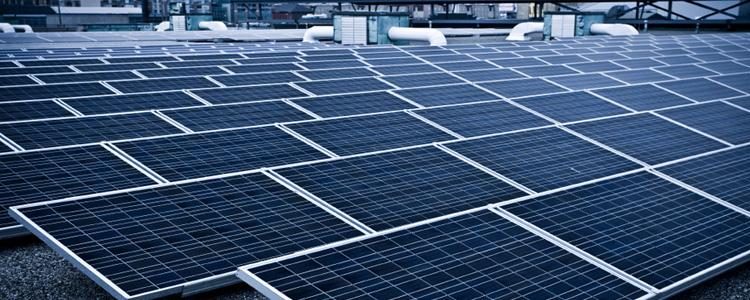In a world increasingly powered by renewable energy, solar power stands as a beacon of promise and potential. Yet, as sunlight bathes our planet in an endless cascade of energy, a significant hurdle shadows the path to its widespread adoption: the high upfront cost of solar installations. This financial barrier often deters potential adopters, leaving many to wonder if the initial investment is truly justified. As we embark on an exploration of this pressing question, we will delve into the intricate dance of economics, environmental impact, and long-term savings. Join us as we unravel the complexities of solar energy’s cost-benefit equation, seeking to illuminate whether the initial expense is a gateway to future gains or an insurmountable obstacle in the quest for sustainable living.
Evaluating Long-Term Savings vs Initial Investment
Analyzing the long-term savings against the initial outlay for solar panels involves weighing a complex array of factors. While the upfront cost might seem daunting, it’s essential to consider the following potential benefits:
- Reduced Energy Bills: Over time, solar panels can significantly decrease electricity expenses, leading to substantial savings.
- Tax Incentives and Rebates: Many regions offer financial incentives that can offset installation costs, enhancing affordability.
- Increased Property Value: Homes equipped with solar panels often see a rise in market value, providing a financial cushion in case of resale.
However, it’s crucial to recognize that these benefits manifest over an extended period. The payoff horizon varies depending on geographic location, energy usage patterns, and local electricity rates. Thus, while the initial financial burden is undeniable, the promise of eventual economic and environmental gains often tips the scales in favor of embracing solar technology.

Understanding Government Incentives and Tax Breaks
When evaluating the high upfront cost of solar energy systems, it’s essential to consider the array of government incentives and tax breaks available to offset these initial expenses. Many countries offer federal tax credits that allow homeowners to deduct a percentage of the solar installation costs from their taxes, effectively reducing the overall investment. In the United States, for instance, the Investment Tax Credit (ITC) provides a significant deduction that can be claimed, making solar energy more financially accessible.
- State and Local Rebates: Depending on your location, state and local governments may offer additional rebates that can further reduce costs.
- Performance-Based Incentives (PBIs): These incentives reward solar panel owners based on the amount of energy their system produces, offering a continuous stream of financial benefits.
- Net Metering: Many utility companies offer net metering programs, allowing homeowners to sell excess energy back to the grid, creating another potential revenue stream.
By leveraging these incentives, the initial investment in solar can be significantly reduced, making it a more attractive and economically viable option for homeowners. Understanding these financial benefits is crucial for anyone considering the switch to solar power.

Analyzing Environmental Impact and Energy Efficiency
When considering the transition to solar energy, one of the most pressing concerns is the environmental impact and energy efficiency of solar panels. Solar energy systems are renowned for their minimal environmental footprint during operation, producing no greenhouse gases and reducing reliance on fossil fuels. The production process, however, involves the use of raw materials and energy, which can temporarily offset these environmental benefits. Still, over the lifespan of a solar panel, typically 25-30 years, the net reduction in carbon emissions is substantial, making it a greener choice overall.
- Reduced Carbon Footprint: Once installed, solar panels provide clean energy with no direct emissions.
- Resource Utilization: The initial energy input for manufacturing is recovered within a few years of operation.
- Longevity and Durability: Panels are designed to withstand extreme weather conditions, ensuring a long-term reduction in environmental impact.
On the energy efficiency front, advances in technology have continually improved the efficiency rates of solar panels, allowing for greater energy output even in less sunny environments. Efficiency improvements mean that fewer panels are needed to meet energy demands, which can lower both material usage and costs. Despite the initial high investment, the long-term savings on energy bills, combined with potential government incentives and the increasing efficiency of solar technology, make solar a financially and environmentally sound investment.

Exploring Financing Options and Payment Plans
When considering the transition to solar energy, the initial investment can often feel daunting. However, a range of financing options and payment plans can ease this financial burden. Homeowners can explore various avenues, such as:
- Solar Loans: Similar to traditional home improvement loans, these offer the benefit of spreading out the cost over several years, often with competitive interest rates.
- Power Purchase Agreements (PPAs): With PPAs, you pay for the power generated by the solar panels rather than the panels themselves, often resulting in immediate energy savings.
- Leasing: Solar leases allow you to rent the solar equipment from a provider, typically with no upfront costs and predictable monthly payments.
Moreover, many solar companies provide tailored payment plans to fit diverse financial situations. These plans can include options for zero down payment or deferred payments, making it feasible for more households to adopt solar energy. As you navigate these options, it’s essential to compare terms, interest rates, and potential savings to ensure you choose the most beneficial path forward.
Future Outlook
In the ever-evolving narrative of energy consumption, the debate over the high upfront costs of solar power remains a pivotal chapter. As we’ve explored, the decision to invest in solar technology is not merely a financial calculation but a multifaceted consideration that intertwines economics, environmental stewardship, and future foresight. While the initial investment may seem daunting, the potential for long-term savings, energy independence, and a smaller carbon footprint offers compelling counterpoints. As the sun sets on our discussion, it is clear that the value of solar power transcends mere numbers. Whether or not the cost is justified ultimately depends on individual circumstances, priorities, and a vision for the future. In this balance of costs and benefits, the choice remains uniquely personal, inviting each of us to weigh today’s expenses against tomorrow’s possibilities.

































